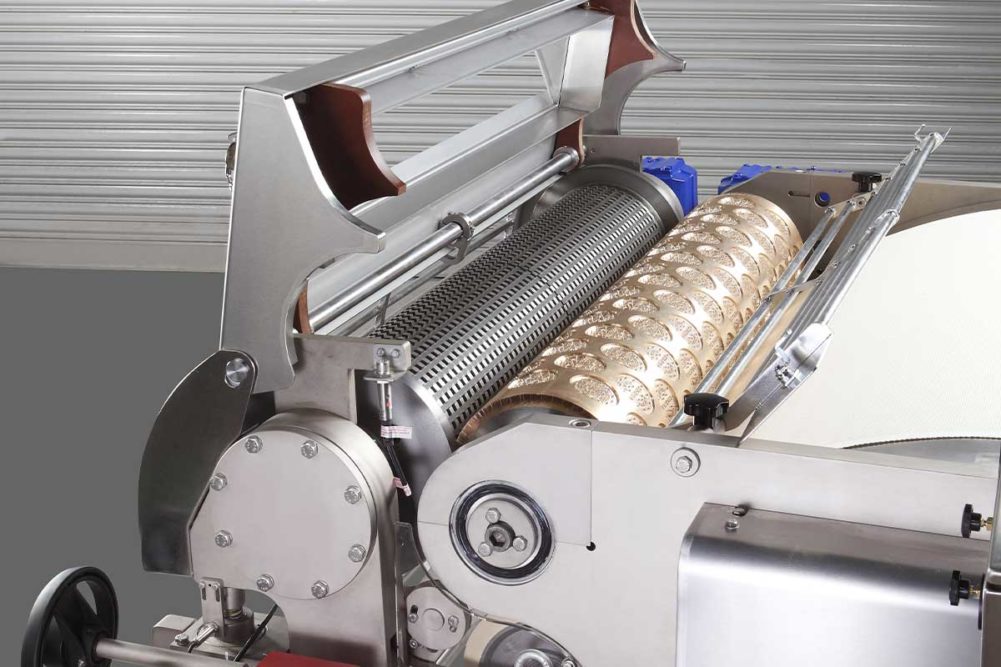In cookie and cracker makeup, control is all about accuracy. Whether sheeting cracker doughs or depositing cookies from a wirecutter or rotary moulder, accurate weights eliminate variability and feed a consistent product to the oven.
“Cookies are more straightforward because it’s usually one forming machine, but even then, having consistent weights, it needs to be checked regularly or else you’ll have variability in moisture or water activity in the final product,” said Ken Zvoncheck, director, process technology at Reading Bakery Systems (RBS).
When working with crispy cookies and crackers, consistent moisture content is critical to hit the sweet spot of crispy and not burnt. Lipika Mandal, food technologist, Spooner Vicars, a Middleby Bakery company, pointed out that if the liquids are too high in a formulation, bakers won’t get the thickness they need in the final cookie.
“If the butter becomes softer during the mixing process, then it will tend to make your cookies flat,” she said. “To avoid this, you may need to chill the dough before getting into the moulder or cookie cutter.”
On the makeup side, Jessica Davis, account manager, baked products and food extrusion, Baker Perkins, recommended the approach of dual-dough cookies, or using a different formulation for the inner and outer doughs to ensure consistent crunch and quality.
“This would require a dual hopper set up for the forming equipment that will allow for both the inner and outer doughs, respectively, to be formulated to achieve a consistent texture throughout the finished product,” she said.
Hydration and protein levels impact the types of portioning equipment bakers use for either crispy cookies or crackers.
“For instance, crispy cracker dough hydration levels below 50% may need traditional auger-type systems that push the dough all the way through, while higher moisture doughs like for crispy cookies benefit from a vane cell divider that can move more hydrated doughs through its shorter path with less friction and less pressure,” said Ken Hagedorn, vice president, bakery sector, Handtmann.
Getting a thin cookie while maintaining accuracy can be a challenge. Andres Lopez, business development manager, Handtmann, noted that using servo controls to move the dough through the company’s vane cell dividing systems enable bakers to achieve accurate weights and dimensions on crispy cookies at high speeds.
For sheeting cracker dough, Zvoncheck said the roll sheeters need to be in line with industry standards for the crackdown ratio for crackers, which typically falls between 2:1 and 3:1.
“If we’re reducing the sheet outside of these ratios, we’ll damage the gluten, and you’ll have a substandard texture,” he said. “One of the first things I do in sheeting is I check each area’s reductions; I do the simple math and compare it to the industry standards. I readjust those crackdown ratios and get them in line for that product.”
Cracker doughs, especially for crispy crackers, are often very thin, and it’s critical that the dough sheet is even. Gentle sheeting is of the utmost importance.
“The dough needs to be very thin; some crackers may only be 1 mm high,” said Werner Koetz, master baker and baking specialist at Koenig Bakery Systems. “This means that processing lines need to gently reduce the dough sheet height.”
If the sheeting line isn’t gentle enough it can overwork the dough too. This will result in crackers that are chewy or tough rather than crispy, Nick Magistrelli, vice president of sales for Rademaker USA, said.
Rework is a common way for cracker manufacturers to reduce waste in their process as well. Once crackers are cut from the sheeted dough, the remaining web of dough is added back into a new batch of dough. Too much rework, however, can have an impact on final quality. Automated sheeting lines can help with this issue.
“When the equipment vendor understands the details of the final shapes and sizes of the crackers, a sheeting line can be designed to create minimal rework,” Magistrelli said.
This article is an excerpt from the March 2024 issue of Baking & Snack. To read the entire feature on Cookie & Cracker Processing, click here.






